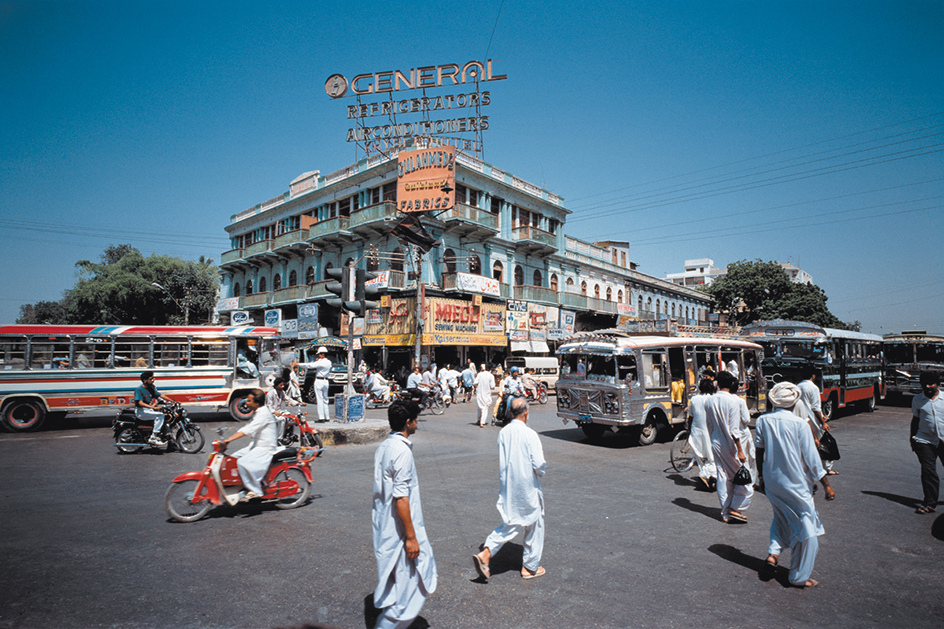Karachi << kuh RAH chee >> (pop. 11,589,068) is the largest city and chief port of Pakistan. It is also the country’s commercial and industrial center and the capital of Sindh Province. The city lies on Pakistan’s southern coast.
The city
is at the edge of a desert on the Sindh Plain. The Layari River flows through Karachi and forms an excellent harbor where it empties into the Arabian Sea.

The center of Karachi, which is next to the harbor, is the most heavily populated section. It includes the main bazaar, or market, called the Sadr, and most of Karachi’s important buildings. Attractions in or near this area include the Mausoleum of Mohammad Ali Jinnah, the founder of Pakistan; the National Museum of Pakistan; and the Karachi Zoological Gardens. Residential areas are scattered around the city, and the chief industrial districts are in the suburbs. Suburban towns provide housing for the rapidly growing population.
Karachi is an important educational center and has several universities and many other schools. Several departments of Pakistan’s government are in the city. The area also includes many popular beach resorts.
Economy.
Factories manufacture textiles, printed materials, steel, food products, chemicals, transportation equipment, and other products. The city has a shipyard, and its port serves as the gateway for Pakistan’s foreign trade. Railroads link Karachi to northern Pakistan. Karachi’s international airport, one of the largest in Asia, is 9 miles (14 kilometers) from the city’s center.

History.
In 1729, a trading village developed near the present site of Karachi’s harbor. The village was soon named Karachi. By the mid-1800’s, about 14,000 people lived in Karachi and its suburbs. After the British gained control of the region in 1843, Karachi became an important port and commercial center. In 1947, Pakistan won independence from Britain. Karachi served as the new nation’s capital from 1947 to 1959, when Islamabad was named the capital.
Karachi’s population increased rapidly in the late 1900’s. The city has a shortage of fresh water, which must be pumped from the interior of Pakistan. The city faces other problems, including air pollution, unsafe drinking water, overcrowding, slums, and violence. The violence results from conflicts between rival ethnic, political, and religious groups.
